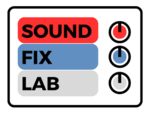Harmony is a fundamental element of music that adds richness, depth, and emotion to a composition. In this article, we will explore the function of harmony in songwriting and music production, discuss rules of thumb for creating harmonies, examine genre-specific variations, identify instruments commonly associated with harmony, and offer guidance on determining the right amount and quality of harmony for your songs.
The Function of Harmony in a Song
Harmony refers to the combination of multiple notes played simultaneously to support and enhance the melody. It provides a vertical dimension to music, creating chords, progressions, and tonal relationships that evoke certain moods and intensify the emotional impact of a composition. Harmony adds texture, complexity, and a sense of completeness to a song, allowing it to resonate with listeners on a deeper level.
Rules of Thumb for Harmony
While harmony is a creative and subjective aspect of music, there are some guidelines that can help you craft effective harmonies. Firstly, ensure that the harmony supports and enhances the melody, rather than overshadowing it. Create chord progressions that complement the mood and emotion of the lyrics and melody. Strive for balance and variety, incorporating both consonant and dissonant chords to add tension and release. Experiment with chord inversions, chord voicings, and harmonic techniques to create interest and movement in your compositions.
Genre-Specific Variations
Harmony varies across different genres, reflecting the unique characteristics and conventions of each style. For instance, in classical music, complex harmonies and traditional chord progressions are prevalent, often involving orchestral instruments, piano, and choirs. In pop and rock music, harmonies are used to create catchy hooks and lush vocal arrangements, with instruments like guitars, keyboards, and backing vocals adding harmonic layers. Jazz music embraces extended and altered chords, improvisation, and sophisticated harmonic progressions, often featuring instruments like saxophones, pianos, and double basses. Explore different genres to understand their harmonic nuances and adapt them to your own compositions.
Instruments Associated with Harmony
While harmony can be created using various instruments, certain instruments are commonly associated with playing harmonies. Keyboards and pianos are versatile instruments capable of playing chords and harmonies directly. Guitars, both acoustic and electric, are often used to strum chords and incorporate harmonies into a song. String instruments like violins, cellos, and violas can also contribute to harmonic arrangements. Additionally, vocal harmonies, achieved through multiple singers or overdubbing, are a powerful tool for creating rich and engaging harmonies.
Determining the Right Amount of Harmony
Knowing when a song needs more or less harmony is a matter of musical intuition and context. Pay attention to the overall balance and dynamics of your composition. If the song feels sparse or lacks depth, consider adding harmonies to fill out the sound and provide a fuller tonal palette. Conversely, if the harmonies feel overwhelming or cluttered, simplify or reduce certain elements to allow the melody and lyrics to shine through. Trust your instincts and seek feedback from others to gauge the effectiveness of your harmonies.
Suggestions and Advice for Harmony
- Study and analyze the harmonic progressions of songs you admire in your chosen genre(s). Pay attention to how they support the melody and evoke certain emotions.
- Experiment with different chord voicings, inversions, and substitutions to add complexity and interest to your harmonies.
- Explore vocal harmonies and consider layering different vocal parts to create lush and captivating arrangements.
- Use harmonic tension and resolution strategically to create emotional impact and captivate the listener.
- Collaborate with other musicians to explore new harmonic ideas and expand your creative possibilities.
- Listen to these songs that have universally well liked harmonies:
- Pop | “Don’t Stop Believin'” by Journey
- Rock | “Bohemian Rhapsody” by Queen
- Jazz | “My Favorite Things” by John Coltrane
- EDM | “Latch” by Disclosure ft. Sam Smith
Harmony is a powerful tool in songwriting and music production, adding depth, emotion, and cohesion to your compositions. By understanding the function of harmony, exploring genre-specific variations, and honing your intuition, you can craft harmonies that elevate your songs to new heights. Embrace the creative possibilities of harmony and let it be the driving force behind your musical expressions.





